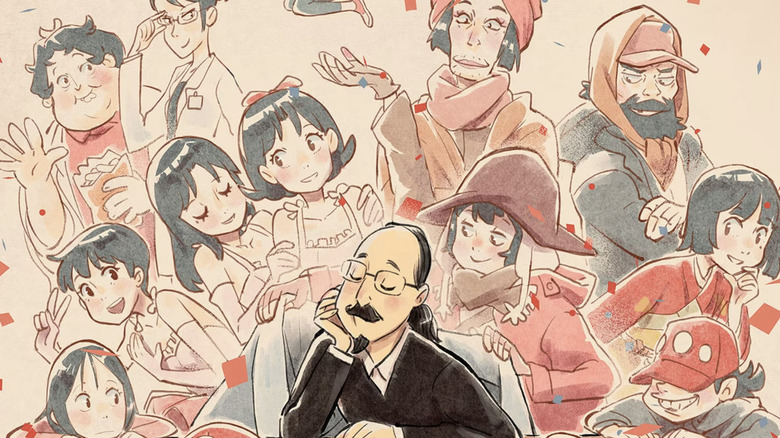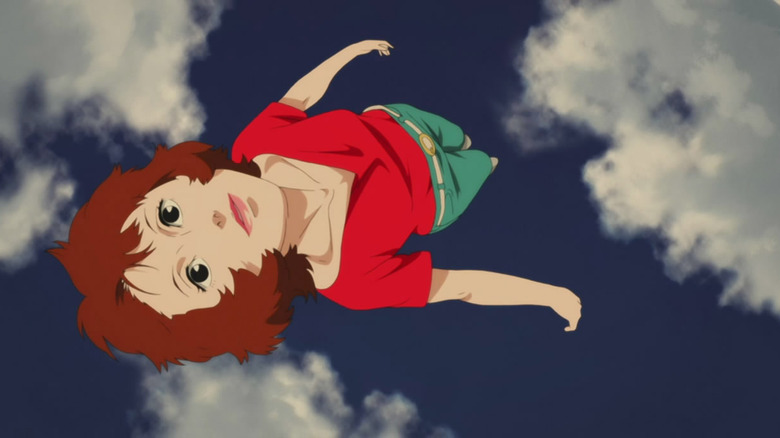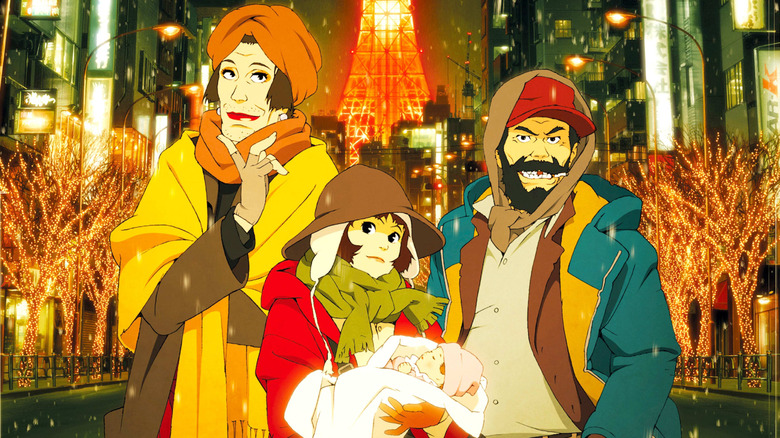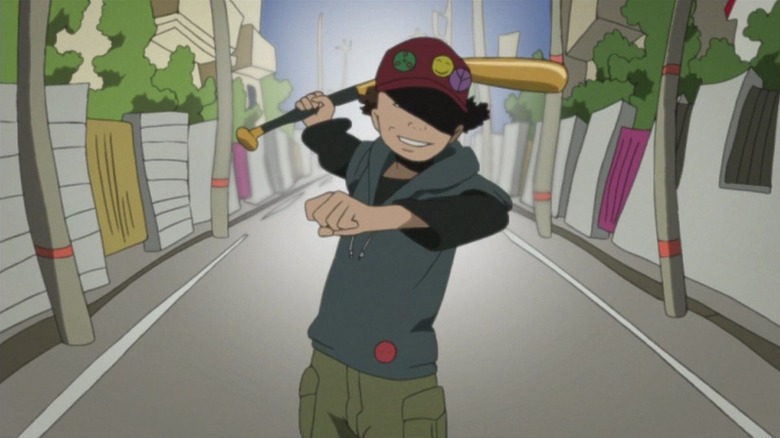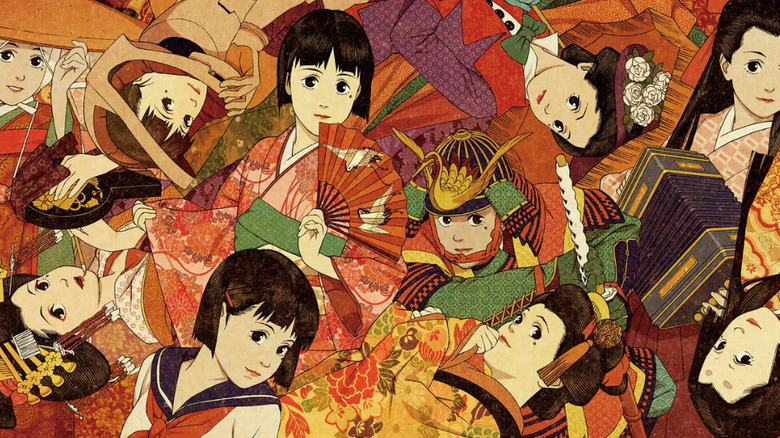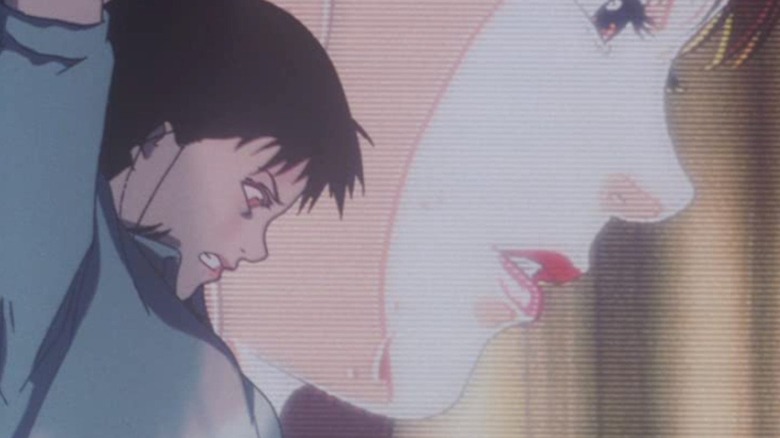Every Satoshi Kon Movie, Ranked
Who is the greatest anime director of all time? One name that cinephiles won't let be forgotten (nor should they) is Satoshi Kon. A surrealist who always tied his imagination to a strong character or theme, only Kon could make the movies he chose to in the way he made them.
His "hyper-real" style of animation (drawing characters and settings that resemble reality, but with extra detail that a pencil can offer) is the core of his filmmaking philosophy; animation can tell the same stories that live-action movies can, but shouldn't try to emulate how those movies tell them. He also understood how the greatest advantage animation has is editing; since the images are drawn, not blocked and framed, it's all the easier for scene after expressive scene to flow into one another.
Kon's influence on international filmmakers (particularly "Perfect Blue" obsessive Darren Aronofsky) is undeniable. Tragically, Kon died in 2010 at the age of 46, cutting that influence (and his in-development projects like "The Dream Machine") short. His body of work includes short films and manga, but the works of his that remain the most cherished are the four (or, depending on who you ask, five) feature films he made during his too-short time on this Earth.
5. Paprika
Steven Spielberg's "The Fabelmans" has many unforgettable moments, among them the line: "Movies are dreams you never forget." Another film that makes this connection is Kon's 2006 "Paprika," which ended up being his final work.
As much as Kon's films bend reality, his narratives often retain some plausibility. "Paprika" is his only science fiction movie. The MacGuffin of the movie is the device "DC Mini," which allows people to view and enter others' dreams. Psychiatrist Dr. Atsuko Chiba intends it to be the next great tool for therapy ("Paprika" is the name of her dream avatar she adopts during DC sessions with her patients). When the DC Mini is stolen, Chiba/Paprika must ensure it isn't used for ill — and winds up helping her client Detective Toshimi Konakawa (assigned to the case) reach his own therapeutic breakthrough.
"Paprika" is Kon at his most uninhibited. It is, after all, set in a dream world where surrealism is the nature of the realm. Take the title sequence, where Paprika dances in and out of reality: one moment she's a figure on a computer screen, the next she's standing over the cubicle looking down on that computer. There's been talk of a live-action "Paprika," but trying to replicate the seamlessness of this time-and-space-defying blocking outside a hand-drawn medium sounds like arrogance to me.
"Paprika" is the least affecting of Kon's films for me, but it's still dang good and deserving of your attention.
4. Tokyo Godfathers
Kon's third film, 2003's "Tokyo Godfathers," is a Christmas movie like no other. It's his sweetest and most family-friendly picture (though not without its intense moments). It also has the most structural breaks from his usual style. In other Kon films, the lead is always a woman working in a creative industry (whether an actress, artist, or inventor), where her personal and professional struggles intertwine. "Tokyo Godfathers" is an ensemble about found family.
Three homeless people (a middle-aged man named Gin, a trans woman named Hana, and a teenage runaway named Miyuki) find a baby crying in the garbage. These three become the titular "Tokyo Godfathers" as they take in the child (mostly at the insistence of Hana, who desperately wants to be a mother). They embark on a series of misadventures across Tokyo to bring the baby back to her birth parents, and each of the trio reconnects with their own family and past along the way. The Christmas Spirit may have become the symbol of consumerism, but it's meant to be a glue that binds loved ones together. A holiday born of the sentiment "peace on Earth and goodwill to all men" is also the perfect setting for the rare movie that acknowledges the humanity of the unhoused.
"Tokyo Godfathers" takes after John Ford's "3 Godfathers" and Leonard Nimoy's "Three Men and a Baby," other films about a trio of clashing personalities who suddenly find themselves as parents. Unlike Kon's other films, this one is a comedy; you may not grasp the Japanese dialogue, but anyone can appreciate the film's humor and heart.
3. Paranoia Agent
"Paranoia Agent" is a 2004 mini-series created and directed by Kon. And yes, it is a TV series, not a long movie chopped up into 13 chapters like "mini-series" tends to mean these days. Due to Kon's limited body of work as a director, I'm overlooking this technicality and including it.
"Paranoia Agent" begins with Tsukiko Sagi, an animation character designer who has created the new hit Maromi (a pink cartoon dog rivaling Hello Kitty! and Pikachu in its cuteness). One night, she's assaulted by a roller-skating boy with a baseball bat. The assailant is dubbed "Lil' Slugger" by the media, while Detectives Ikari and Maniwa are assigned to track him down.
The series never stops following the threads it spins in the first episode, but it initially takes an episodic approach. In the first half, every episode follows a new protagonist who, by the end, has hit their personal rock bottom and becomes Lil' Slugger's next victim. Episode 3, "Double Lips," follows a woman dealing with a split identity (she's a teaching assistant by day, call girl by night). In episode 5, "The Holy Warrior," Ikari and Maniwa follow one of their suspects into his fantasy world, which looks right out of a "Dungeons and Dragons" style video game. This surrealistic twinge escalates as the show goes on, making it feel like a test run for "Paprika" (the two projects share a writer, Seishi Minakami).
At times, "Paranoia Agent" feels like a short film collection stretching the boundless ends of Kon's imagination. Watching it reminds you of how lesser the world is without that imagination.
2. Millennium Actress
Kon's second film, 2001's "Millennium Actress," is narratively down-to-earth yet formally experimental. The execution of that contrast shows his sui generis mastery of animation.
Two TV reporters, Genya and Kyoji, sit down with long-retired Japanese actress Chiyoko Fujiwara for a retrospective interview on her career. Chiyoko tells the two her life story: how, as a young girl, she briefly met and fell in love with an artist and never stopped searching for him. The movies were all part of her search for him; she hoped he might see her on the screen one day and they could reconnect. It never happened, but she's ok with that; the chase was all the fun she needed.
This is not an out-there premise; a journalist searching for the meaning in a public figure's life is a story going back as far as "Citizen Kane." However, once Chiyoko starts telling the story, the barriers between past and present — and reality and cinema — collapse. Flashbacks to Chiyoko's youth include Genya and Kyoji — not as background onlookers either, but as Chiyoko's companions as she retraces her lifetime of footsteps. With a tight 80+ minute runtime, the film charges through all of Chiyoko's films (from samurai to sci-fi) with match cut after match cut. Her life and the films bleed together, because how can she separate herself from all the roles she played in her life?
"Millennium Actress" was the first Kon picture scored by Susumu Hirasawa, and his electronic-operatic music perfectly transmutes the movie's yearning into audio bliss. Even if there's just one Satoshi Kon movie I prefer, "Millennium Actress" is the director's most beautiful and touching masterpiece.
1. Perfect Blue
When you call a director's first movie their best, it can't help but feel like a backhanded compliment: "Oh yeah, no matter how much you grew as an artist, it was all downhill from your debut." But even as I wrestled with that question, it would've been dishonest for me to not award Satoshi Kon's 1997 debut "Perfect Blue" the first prize. It struck me to my soul and awakened me to the artistic heights animation could reach; all it takes is an artist willing to dig deep into his mind and pull out images most would keep buried.
"Perfect Blue" follows Mima, a Japanese idol singer who leaves her pop group, CHAM!, to become an actress. Her career shifts, and the loss of her professionally-maintained innocence, brings an unrelenting identity crisis.
The film left me enchanted and haunted when I first watched. The surrealism is more subtle in this than Kon's later pictures, but he's using the formal fluidity of animation to portray how one loses their grip on reality. Neither Mima nor the audience can tell what's real. (In the latter half, there's repeated smash cuts of Mima waking up in her bedroom, conjuring the illusion of a layered dream sequence.)
"Perfect Blue" is honestly not that confusing on repeat viewings once you know how to connect the narrative and the structure, but it's still terrifying. Not just for the violence or Masahiro Ikumi's score (which sounds like the whispered chants of a nightmare) either. "Perfect Blue" turned 25 in 2022, but its themes of digital parasocial relationships and how we suffer if we let our careers or others' perceptions define us feel modern.
/Film once named "Perfect Blue" the scariest animated film ever made. No argument here!
